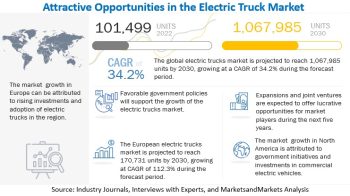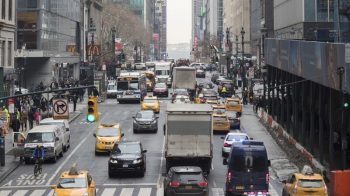Fiber-Reinforced Plastic (FRP) grating has emerged as a versatile and innovative material in various industries, owing to its exceptional properties, such as high strength, corrosion resistance, lightweight, and cost-effectiveness. As industries across the globe seek sustainable and durable solutions, the FRP grating market has witnessed significant growth and is poised to continue its upward trajectory. In this article, we will explore the key insights provided by MNM on the FRP grating market, examining the drivers, challenges, applications, and regional trends shaping this industry. The FRP grating market has been bolstered by the increasing demand for lightweight and corrosion-resistant materials across several end-user industries, including industrial, infrastructure, oil & gas, water treatment, and others. FRP grating’s ability to replace traditional materials like steel, aluminum, and wood has been a major factor driving its adoption. The FRP grating market is projected to reach USD 574.2 Million by upcoming years, at a CAGR of 4.24%.
Browse 71 market data tables and 69 figures spread through 149 pages and in-depth TOC on “FRP Grating Market by Resin Type (Polyester, Vinyl Ester, Phenolic), Process (Molded, Pultruded), Application (Stair Treads, Walkways, Platforms), End-use Industry (Industrial, Water Management, Cooling Towers, Marine), and Region – Global Forecast.
Key players operational in the FRP grating market are Strongwell Corporation (U.S.), Techno Composites Domine GmbH (U.K.), McNichols Company (U.S.), Meiser GmbH (U.K.), Bedford Reinforced Plastics (U.S.), and AGC MAtex Co. Ltd. (Japan).
Download PDF Brochure: https://www.marketsandmarkets.com/pdfdownloadNew.asp?id=196188355
Growth Drivers:
Excellent Properties: FRP grating’s key advantage lies in its superior properties, such as high strength-to-weight ratio, low thermal conductivity, and resistance to chemicals, UV rays, and moisture. These properties make it an ideal choice for corrosive environments, providing longevity and reducing maintenance costs.
Infrastructure Development: The burgeoning infrastructure development activities worldwide have led to an increased demand for FRP grating in applications like walkways, platforms, trench covers, and bridges. The material’s lightweight nature also eases transportation and installation.
Rising Environmental Concerns: FRP grating’s eco-friendly characteristics, including recyclability and energy efficiency during manufacturing, have made it an attractive alternative to conventional materials. Industries are now focusing on sustainable solutions to reduce their carbon footprint.

Challenges:
Cost Factor: Although the long-term benefits of FRP grating outweigh its initial costs, some end-users may find the upfront investment higher than traditional materials. However, this challenge is mitigated by the material’s low maintenance and replacement costs.
Limited Awareness: Despite its various advantages, there is still limited awareness about FRP grating among end-users, particularly in developing regions. Educating potential customers about its benefits will be crucial to drive wider adoption.
Request For New Version: https://www.marketsandmarkets.com/RequestNewVersion.asp?id=196188355
Key Applications:
Industrial Sector: FRP grating finds extensive use in the industrial sector for flooring, mezzanines, and stair treads due to its chemical resistance and fire retardant properties.
Water Treatment: The material’s non-corrosive nature makes it a preferred choice for water treatment applications such as drainage systems, cooling towers, and water tank covers.
Oil & Gas Industry: FRP grating is widely used in offshore platforms, walkways, and decks due to its ability to withstand harsh environmental conditions.
Transportation: The lightweight nature of FRP grating makes it suitable for applications in bridges, ramps, and ship decks, reducing the overall structural load.
Regional Trends:
MNM Research’s analysis indicates that North America and Europe currently lead the FRP grating market. The growth in these regions can be attributed to their well-established infrastructure and a high demand for durable and corrosion-resistant materials. Meanwhile, Asia-Pacific is anticipated to witness the fastest growth in the coming years, driven by rapid industrialization, urbanization, and an increasing emphasis on sustainable practices.
Asia-Pacific is expected to be the fastest-growing market for FRP grating during the forecast period
Asia-Pacific is expected to be the fastest-growing market for FRP grating, due to the presence of increasing industrialization in several countries in the region. China, India, and Japan are the major consumers of FRP grating in the region. The increasing use of FRP grating in various applications to ensure long-term durability and increase the service life of infrastructure is expected to drive the growth of the market in Asia-Pacific.
Inquire Before Buying: https://www.marketsandmarkets.com/Enquiry_Before_BuyingNew.asp?id=196188355
The FRP grating market is poised for continued growth, driven by its exceptional properties, rising environmental concerns, and the need for durable materials in various industries. As the world embraces sustainability and seeks efficient solutions, FRP grating is likely to witness increased adoption across the globe. The challenges, such as initial costs and limited awareness, can be overcome through targeted marketing efforts and educational campaigns. With advancements in technology and growing application areas, FRP grating is set to play a vital role in shaping the future of numerous industries.


